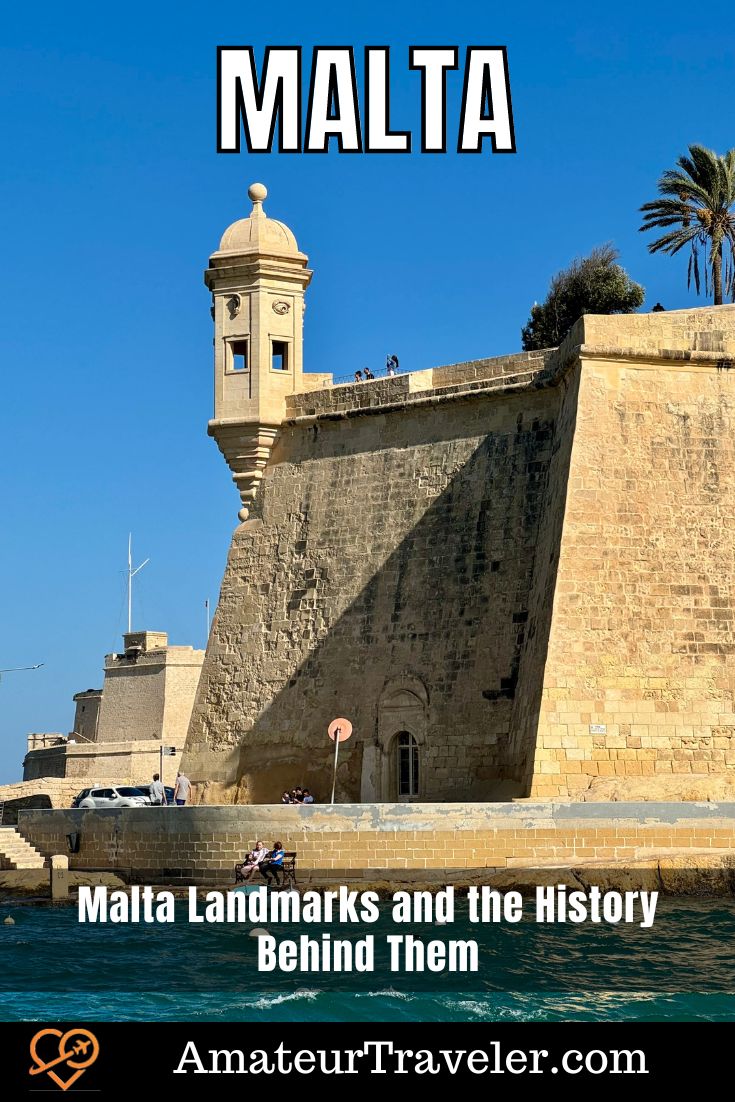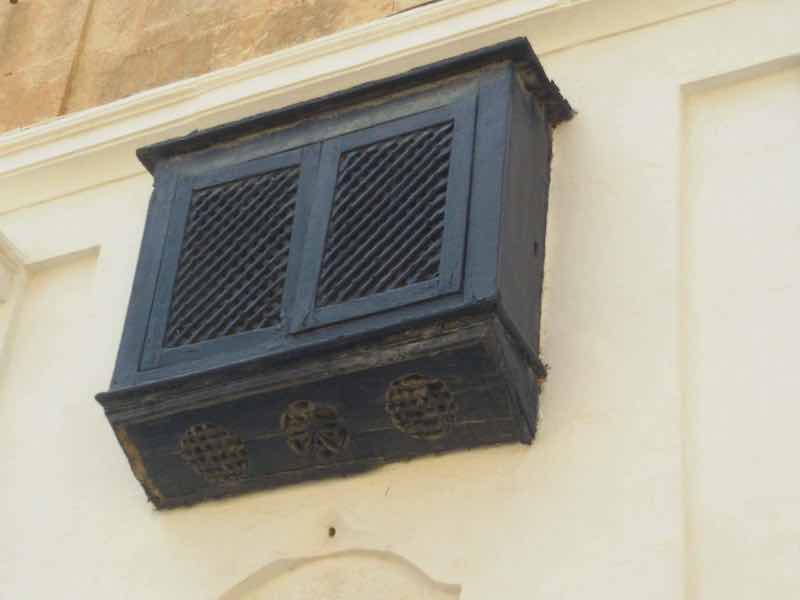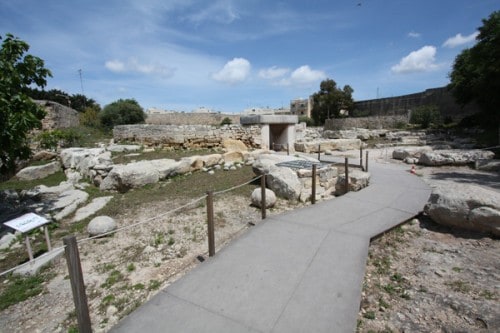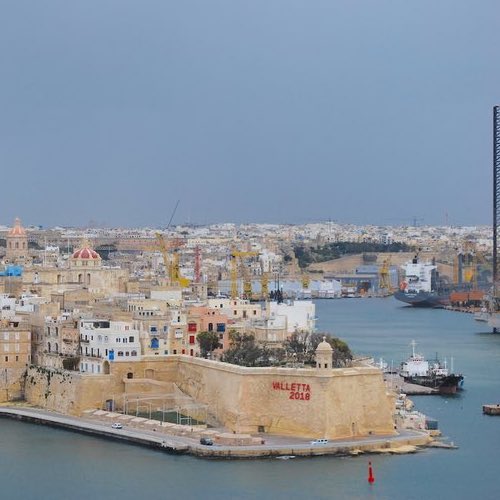
author at Mnajdra Megalithic Temple
Malta, a small island nation located in the Mediterranean, has a rich and fascinating history that dates back to prehistoric times. From the Neolithic era to the present day, Malta has been shaped by a series of invasions, conquests, and cultural exchanges that have left their mark on the island’s landscape and architecture. Exploring Malta’s historic landmarks is an experience that transports you through time and provides a glimpse into the island’s captivating past.
Visitors to Malta can witness firsthand the remnants of the island’s prehistoric civilizations, the grandiose fortresses built by the Hospitaller Knights, and the architectural and cultural influences left behind by the numerous civilizations that have occupied the island over the centuries.
Table of contents: ()


Mnajdra Temple, Malta
Neolithic Era in Malta
The neolithic landmarks on Malta date from 5000 BC to 2200 BC. This era is marked by the construction of numerous temples and other structures that continue to fascinate archaeologists and visitors alike. The neolithic temples of Malta are some of the oldest freestanding stone structures in the world, predating the Pyramids of Giza in Egypt and Stonehenge. 4 of the 5 UNESCO sites on Malta date back to this period.
It is thought that the temples were used for religious practices and that Malta’s prehistoric civilizations believed them to be sacred. They are sometimes intricately decorated with carvings and patterns, adding even more to their mystique. Little is known of the temple builders themselves. After the apparent collapse of the temple builders civilization around 2350 BC, the island was repopulated with more invaders from the Bronze Age.
I would recommend 4 sites for people interested in this era of Malta’s history: the Tarxien Temples, the necropolis of Ħal Saflieni Hypogeum, the dual-site of Ħaġar Qim and Mnajdra, and the temple of Ġgantija on Gozo.
Tarxien Temples
The Tarxien Temples are the easiest of the megalithic temples to visit for most tourists to Malta. They are located only 25 minutes by bus from the main Valetta Bus station or less if you travel by rental car or ride share. They are a wonderful example of architecture from the temple period. These temples were discovered in 1913 by local farmers and were later restored to showcase the work of the prehistoric people who built them. The temples have been dated back to around 3150 BC.
The Tarxien Temples consist of three distinct but attached structures, with the largest being the Central Temple. It is believed that animal sacrifices took place here. Stone balls were discovered at Tarxien and it is thought that the temple builders used these like ball bearers under the heavy stones to move them more easily.
Ħal Saflieni Hypogeum (UNESCO)
The Ħal Saflieni Hypogeum is a unique and remarkable underground structure located within easy walking distance from the Tarxien Temples. Dating back to around 3600 BCE, this Neolithic subterranean complex is one of the world’s oldest prehistoric burial sites. Carved into the soft limestone bedrock, the Hypogeum comprises a series of interconnecting chambers, halls, and passages, showcasing the advanced engineering and architectural skills of its ancient creators.
One clue that Malta’s megalithic temples had roofed structures is that the people who carved the Hypogeum recreated the stone ring structure in their designs. You can see that the roofs would have been one stone ring set on top of another, each with a smaller and smaller diameter.
The Hypogeum’s purpose is believed to be multifaceted, serving as a sanctuary, ritual site, and necropolis. The Hypogeum stands out for its intricate carvings, including the famous “Sleeping Lady,” a gracefully depicted female figurine. Due to its historical significance, the Hypogeum has been designated a UNESCO World Heritage Site, attracting archaeologists, historians, and tourists alike, who marvel at its mysterious origins and the insight it provides into Malta’s prehistoric past.
Visitors to the Ħal Saflieni Hypogeum embark on a guided tour that provides a fascinating glimpse into the lives and beliefs of the ancient Maltese people. The site’s acoustic properties are particularly noteworthy, with some chambers producing unique reverberations and echoes that are thought to have held ceremonial significance. Due to the delicate nature of the underground environment and the need for preservation, access to the Hypogeum is limited, and a controlled number of visitors are allowed each day. This precautionary measure ensures the protection of the site and its delicate carvings. This does make it the most difficult of the sites to visit. You will need to make a reservation to visit weeks or months in advance.
You will not be able to bring your camera or cell phone into Ħal Saflieni Hypogeum but will leave them in a locker before accessing the site.
Ħaġar Qim and Mnajdra (UNSECO)
Ħaġar Qim and Mnajdra are two megalithic temple complexes located together on the southern coast of the island of Malta, both of which are UNESCO World Heritage Sites. These prehistoric structures, built during the Neolithic period (3600-2500 BCE), represent some of the world’s oldest free-standing stone architecture and are essential components of Malta’s rich archaeological heritage.
Ħaġar Qim (3600–3200 BC) is a megalithic complex that includes a series of impressive limestone structures. The main temple is a massive building, constructed using large limestone blocks. The site’s design reflects a sophisticated understanding of astronomy, with its orientation aligned to the solstices. For those with mobility issues, Ħaġar Qim will be easier to visit than Mnajdra.
Mnajdra is located a short walk down the hill from Ħaġar Qim. It consists of three interconnected temples: the Upper (3600-3200 BC), Middle (3150 – 2500 BC), and Lower temples. Like Ħaġar Qim, Mnajdra showcases the advanced architectural and engineering skills of its ancient builders. The temples are characterized by their well-preserved megalithic walls, altars, and intricate carvings. Mnajdra’s unique feature is its solar alignments, where sunlight penetrates specific apertures during the equinoxes, marking significant celestial events in the Neolithic calendar. This alignment suggests a connection between the temples and the observation of solar phenomena, emphasizing the spiritual and astronomical significance of these structures.

Ħaġar Qim model at the visitor center
Ħaġar Qim and Mnajdra share a common visitor center and admission price and it is my favorite of the visitor centers at Malta’s neolithic sites. It has information about the construction, discovery, and study of these two sites.
I reached Ħaġar Qim and Mnajdra by bus, but visiting the southwest part of the island would be easier if you had a rental car.
Read more about transportation: Getting Around in Malta: A Guide to Transportation Options
Ġgantija Temples (UNESCO)
The Ġgantija Temples, situated on the island of Gozo in Malta, are among the most significant and well-preserved megalithic temple complexes in the world. Constructed during the Neolithic period, around 3600 to 3200 BCE, the Ġgantija Temples are also recognized as a UNESCO World Heritage Site. The name “Ġgantija” is derived from the Maltese word “ġgant,” meaning giant, likely referring to the massive size of the stones used in the construction.
The temple complex consists of two main structures, Ġgantija North and Ġgantija South, both enclosed by a common boundary wall. The temples are constructed using enormous limestone blocks, some of which weigh over fifty tons. The megaliths are carefully arranged to form three-apsed structures, with a central corridor flanked by chambers. The purpose of these temples remains speculative, but they are believed to have served as religious and ritualistic centers, possibly dedicated to a fertility cult.
The Ġgantija Temples were a big reason why I wanted to visit the island of Gozo but I thought the other 3 temple sites mentioned above were more spectacular architecturally. I thought the most interesting part of the temple complex was the small museum with artifacts that were found when the temple was excavated, including carvings left by the mysterious temple builders from more than 5,000 years ago.
Phoenician / Carthaginian Era in Malta
The Phoenicians established settlements on the islands in the 8th century BCE, including the ancient city of Maleth (modern-day Mdina). This is about 100 years after the Phoenicians founded the city of Carthage in Northern Africa. Malta was captured by the Romans in 218 BC during the 2nd Punic War between Rome and Carthage.
Today, visitors can witness the Phoenician / Carthaginian influence in Malta by exploring several archaeological sites, including the Phoenician temple at Tas-Silġ and a Carthaginian pit tomb on the Xemxija Heritage Trail. Also some of the earliest tombs in Rebat date back to the Carthaginian era.
Roman Era in Malta
The Roman Empire’s influence on Malta during the Roman Era was immense. Visitors can experience a glimpse of Malta’s Roman past by exploring the well-preserved Roman ruins scattered throughout the island.
During the Roman Era Christianity came to Malta as told in chapter 28 of the book of Acts in the Bible, the evangelist St. Paul was shipwrecked in Malta. Tradition says this event occurred on the rocky island known as St Paul’s Islands in Saint Paul’s Bay which is about 9 miles northwest of Valetta.
The city of Melite was an important center for trade and commerce, and the Roman Republic established it as a municipality in 96 BC. It lies under the current cities of Rabat and Mdina. Two sites in Rebat where you can access that era are the Roman Villa and St Paul’s Catacombs.
Roman Villa – Rebat
The Domvs Romana, also known as the Roman Villa, is a well-preserved Roman townhouse that dates back to the 1st century BCE. It was accidentally discovered in 1881 when workers were digging a well. The villa is believed to have belonged to a wealthy Roman family and is characterized by its well-preserved mosaic floors, depicting intricate geometric patterns and mythological scenes. The site includes several rooms and courtyards.
St Paul’s Catacombs – Rebat
St. Paul’s Catacombs, located in Rabat, Malta, is a significant archaeological site dating back to the Roman period. These catacombs are a complex network of underground burial chambers and passages that served as a cemetery for early Christians. The site is associated with St. Paul, who local tradition says is to have taken refuge in a cave in Rabat (St. Paul’s Grotto ) during his stay in Malta.
The catacombs are believed to have been in use between the 4th and 9th centuries AD and provide valuable insights into the religious practices, burial customs, and art of the early Christian community in Malta. The complex includes various chambers with frescoes, carvings, and numerous tombs, showcasing the evolving styles of burial over the centuries.
Turing the Catacombs is facilitated by a wonderful audio guide that explains the use of this subterranean necropolis including the custom of people eating ceremonial dinners near the grave of their departed loved ones. It is an extensive site and only the most ardent history buffs, of which I am not apparently one, will want to visit every individual site.
Byzantine Era
After the fall of the Western Roman Empire to the Visigoths in the 400s, the Eastern Roman Empire (commonly known as the Byzantines) conquered the island in the Gothic War (535–554) and returned Roman rule to the island. Little remains from this period. You can see the foundation of the Byzantine Basilica at Tas-Silġ.

Mdina
Arab Era
In 870, Muslim invaders from the Abbasid Caliph in what is now eastern Algeria, Tunisia, and western Libra captured Malta from the Byzantines. They made their capital in Mdina and gave it the name it has today. The Maltese language is heavily influenced by Arabic. One-third of the Maltese vocabulary derives from Arabic. It is the only Semitic language that is routinely written in the Latin alphabet.
The fortifications of Mdina date to the Arab Era. St Paul’s Cathedral in Mdina was converted to a mosque during this period.

Muxrabija photo by Continentaleurope
One lasting impact of the Arab Era is the distinct balconies of the buildings in Malta’s older cities which were influenced by the Arab muxrabija which is a balcony with an ornate wooden screen that allows cool air but privacy for the residents.
Norman / Holy Roman Empire / France
An Army from Roger I from the nearby Norman Kingdom of Sicily raided Malta in 1091 and captured Mdina. The Normans returned in 1127 under Roger’s son King Roger II and started the re-Christianization of Malta. The Norman rule in Malta lasted from 1127 until 1194.
According to tradition, the origin of the Maltese national flag is attributed to the Norman Count Roger. During a conflict with the Arabs, the story goes that he tore his red and white checkered flag in half and presented one portion to the Maltese men-at-arms who fought alongside him in battle.
The Kingdom of Sicily fell in 1194 to the Swabians (House of Hohenstaufen) and Malta became a neglected part of the Holy Roman Empire.
In 1266, Charles of Anjou, the brother of King Louis IX of France, was granted control of Malta as a fiefdom.
Aragonese / Spanish Era
During the wonderfully named War of the Sicilian Vespers in 1283, the Aragonese successfully captured Malta, marking the commencement of Spanish rule.
The oldest part of the walls of the Citadella of Victoria on the Island of Gozo date from the Aragonese Era.
Hospitaller Era in Malta
The Hospitaller Knights, also known as the Knights of Malta or the Knights of St. John, came to Malta in the 16th century. The order was originally established in the 11th century in Jerusalem to provide medical care and protection to Christian pilgrims visiting the Holy Land. Over time, the order evolved into a military order with a focus on defending Christendom.
In 1523, the Knights were forced to surrender their last stronghold on the Island of Rhodes to the Ottoman Turks and Suleiman The Magnificent, prompting the Knights to search for a new base. In 1530, Holy Roman Emperor Charles V granted the Knights the islands of Malta and Gozo. The Hospitallers saw Malta as a strategic location in the central Mediterranean, allowing them to control sea routes and serve as a bulwark against Ottoman expansion.
Great Siege of Malta
The Knights of Malta successfully defended the island against an Ottoman siege in 1565, known as the Great Siege of Malta. The two main locations for the Knights in 1565 were the forts of St Elmo (a smaller version than the current fort) which is now at the seaward side of the city of Valetta and the fortress and St Angelo. The Ottomans took the smaller fortress of St Elmo but it took 4 weeks of hard fighting as the knights and other members of the fort fought nearly to the last man. This precious time gave the knights, soldiers, and citizens defending St Angelo time to improve their defenses.
1,500 had died defending St Elmo but the Ottomans had lost 6,000 men in the process. As spring turned into summer they also started to lose thousands of soldiers to disease. Eventually, with reinforcements coming for the Knights from Sicily, the Ottomans ran out of time and men. Their original army numbered in the range of 35,000–40,000, but they lost around 25,000 from the fighting and disease before they gave up their attack.
The hard-fought victory was a significant event in the struggle between the Christian and Ottoman forces for control of the Mediterranean and even more significant for the island of Malta. Today, Fort St Elmo serves as a museum with a particularly good exhibit about The Great Seige of Malta and Malta in World War II.
Valetta
The city of Valetta was built after the victory during the Great Siege of Malta. The city is one massive fortress in case the Ottomans were to decide to make a return engagement to Malta. The city is named after Jean Parisot de Valette who was the leader of the Knights of St John during the Great Siege. The best way to appreciate the fortifications of Valetta, and I think the beauty of the city, is from the traditional harbor cruise.
The Co-Cathedral of St John the Baptist in Valetta
The best way to see the wealth of the Knights of St John in the days after the siege is to visit the Co-Cathedral of St John the Baptist in Valetta. This amazing church is rather plain on the outside, but the inside is over-the-top ornate.
The knights of St John came from a variety of countries and a variety of languages. They were organized into a number of “langue” from the Italian for tongue or language:
- the Langue of Auvergne
- the Langue of France
- the Langue of Provence
- the Langue of Aragon
- the Langue of Italy
- the Langue of Germany (including all of the Holy Roman Empire as well as Scandinavia, Hungary and Poland)
- the Langue of England (including Scotland and Ireland) (disbanded after the English Protestant Reformation)
- the Langue of Castille, Léon and Portugal
The chapels are each dedicated to one of these different groups. I recommend a tour guide for the tour of the cathedral who can point out these distinctions. I touted the co-cathedral with Isabell who is an independent guide arranged by the local Tourism Board (email her at paulsant at vol.net.mt).
There are also two original works by the artist Caravaggio in the church including the Beheading of St. John the Baptist’.
Each of the langues of the knights had an “Auberge” where the knights lived in community. 5 of the original 8 buildings still survive and have been repurposed as municipal buildings.
French Occupation
The French occupation of Malta occurred in 1798 when Napoleon Bonaparte seized control of the island from the Knights of St. John. The occupation led to administrative reforms and the establishment of the Republic of Malta. However, discontent among the Maltese, fueled by heavy taxes and anti-religious policies, led to a popular uprising. With British assistance, the Maltese successfully rebelled in 1800, and Malta came under British control, marking the end of the French occupation. Victory Day on September 8th commemorates the Maltese uprising.
British Colonial Era
The British colonial era in Malta lasted for over 150 years, during which the island became an important naval base and a hub for international trade. The British implemented significant social and economic reforms, such as the introduction of a modern legal system and the establishment of new industries. Moreover, the British left a lasting legacy in Malta’s architectural landscape, with iconic buildings such as the Royal Opera House and the Valletta Waterfront.
The British influence can still be seen in things like red telephone boxes, fluent English, and an unnatural love for mushy peas.
Siege of Malta
During World War II, Malta played a strategic role in the Mediterranean, and its location made it a target for Axis bombing campaigns. The Axis powers, the Germans and Italians, sought to neutralize Malta because of its strategic importance as a naval and air base. The intense and sustained bombing of Malta, especially in 1940-1942, is often referred to as the Siege of Malta.
The bombing campaign against Malta began in earnest in 1940, with the Axis forces aiming to incapacitate the island’s defenses and render it unusable as a British military base. The British and Maltese people endured relentless air raids, and the island became one of the most heavily bombed places during the war.
During World War II, in 1942, King George VI awarded the George Cross to Malta in recognition of the extraordinary bravery and endurance displayed by the Maltese people and military personnel during the intense Axis bombardment and siege of the island. The George Cross, the highest civil decoration in the United Kingdom, was incorporated into Malta’s flag, symbolizing the collective bravery and sacrifice of the Maltese during the war.
If you want to connect with this part of Malta’s history you can take the Underground Valetta tour. During the constant bombardment, the residents of the city went underground. They expanded tunnels under the city of Valetta into housing for 20,000 people. If you don’t get claustrophobic, this is an interesting tour but it is limited so book well in advance. The tour concludes with an audio-visual presentation in an ancient cistern.
Again, the Military Museum at Fort St Elmo does a great job of covering this time period.
Malta’s Independence
After decades of colonial rule, Malta gained its independence from Britain in 1964. The country became a republic in 1974, and since then has developed into a modern European nation while preserving its rich cultural heritage. The independence of Malta marked the end of a long journey, during which the Maltese people struggled for self-determination and recognition.
Where to Stay in Malta
| Hotel | rating | cost | ||
|---|---|---|---|---|
| Seaview Hotel – Adults Only 16 Plus | 9.1 | $ | Book Now | |
| Talbot & Bons Bed & Breakfast | 9.0 | $ | Book Now | |
| Radisson Blu Resort & Spa, Malta Golden Sands | 9.0 | $$ | Book Now |
Conclusion
From the mysterious temples of Neolithic Malta to the grandiose fortresses of the Hospitaller Knights, Malta’s fascinating past is visible throughout the island. The remnants of Malta’s prehistoric civilizations, the Phoenician and Carthaginian influence, the Roman governance and way of life, the Byzantine, Arab, Norman, and Aragonese rule, the French occupation, the British colonial era, and Malta’s journey towards independence and the birth of the Maltese Republic all provide valuable insights into the island’s history.
During my visit to Malta, the Tourism Board sponsored my visit to Underground Malta, Valetta, and Mdina. For that, they have my thanks.
+Chris Christensen | @chris2x | facebook





















 One Week in Malta – Why Malta is Worth a Visit
One Week in Malta – Why Malta is Worth a Visit 7 Things the Guidebooks Won’t Tell You About Malta
7 Things the Guidebooks Won’t Tell You About Malta Sightseeing in Malta – An Island of Fortresses and Cathedrals
Sightseeing in Malta – An Island of Fortresses and Cathedrals Getting Around in Malta: A Guide to Transportation Options
Getting Around in Malta: A Guide to Transportation Options
